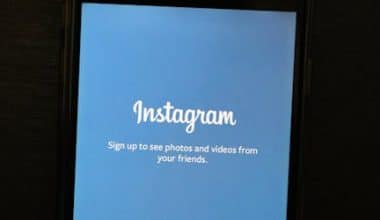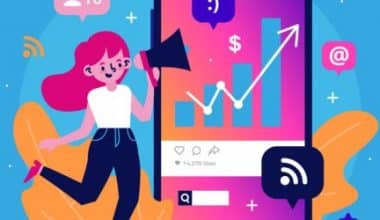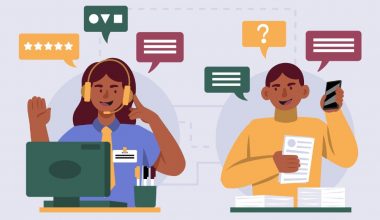Digital marketing for small businesses in 2024 is all about using online tools and strategies to reach and engage customers. When small businesses start, they often try to get their first customers through traditional advertising like brochures, print ads, or billboards.
While this might bring in some business, there’s an easier and better way. Small businesses should think about the global online market and use both traditional and digital marketing to reach more people.
Research by Visual Objects shows that 77% of consumers check online before visiting a store, and 46% are more likely to visit if they find a strong online presence on local search pages.
Every small business, whether new or established, should use digital channels to get leads and turn interest into customers. In this article, we’ll look at ways to use online channels to promote and grow your business, with great examples from small brands for inspiration.
Key Points
- Before starting any digital marketing work, it’s essential to understand the business, its services, and its target audience.
- Analyzing competitors in digital marketing helps identify successful tactics that can be adapted and implemented.
- Using paid advertising on platforms like Google, Facebook, and Instagram helps small businesses reach a larger audience quickly.
- Ensure that the business’s website is fast, user-friendly, and optimized for search engines.
What is Digital Marketing for Small Businesses
For small businesses, digital marketing is the use of the Internet and other digital tools to promote and sell products or services. It is a very popular and powerful means to make people aware of, interested in, and buy your products or services. As the name suggests, digital marketing happens through digital channels like social media, websites, search engines, email, and text messaging.
In digital marketing, also known as online or internet marketing, business messages or adverts are sent through digital channels, which people can access using their phones, computers, and tablets.
Digital marketing and traditional marketing (like print ads and direct mail) both aim to make people aware of products and influence their buying decisions to boost sales. The main difference is that digital marketing uses the internet to communicate and engage with specific audiences.
Whenever I think of digital marketing for small businesses, I remember Angel Beauty Salon, a local unisex salon where I get my hair and nails done every weekend. The owner, who is a friend of mine, mentioned they were struggling to attract more customers despite having great customer service and a cozy atmosphere. I offered to help because I know a bit about digital marketing. This small project ignited my passion and led me to focus on helping small businesses with their digital marketing.
Read Also: Digital Marketing Funnel Mastery: The A-Z Training to More Sales and Subscribers
To get the best results, you need to know which digital marketing strategies work best for your audience. As we go on, we will explain the most effective digital marketing strategies and how to use them to achieve your goals for your small business. This brings us to the types of digital marketing.
What are the Types of Digital Marketing
Digital marketing began to grow after the launch of the World Wide Web in 1989. As a result, the rise of business websites, better email technologies, and popular social media channels have fueled its rapid growth. Today, online marketing is a crucial part of most businesses’ marketing plans because so many people use digital technologies, and it can deliver excellent results.
Here are the basic types of digital marketing you can use for your small business:
#1. Social Media Marketing
Social media marketing is very popular in digital marketing. In the United States, more than 312 million people use social networks every month. People of all ages use social media for fun, talking with others, learning about interests, and shopping.
It involves promoting your products or services on platforms like Facebook, Instagram, Twitter, LinkedIn, and TikTok. It works by making interesting posts, sharing updates, running ads aimed at specific groups, and talking with followers. By regularly sharing useful content about your business and replying to comments and messages, your business can attract and keep customers.
#2. Search Engine Optimization (SEO)
SEO is an essential digital marketing strategy for businesses that helps in driving traffic to their websites. SEO means making your website show up higher, so search engines, such as Google rank your website high on search engine results pages (SERPs).
It works by improving your website’s content, layout, and links to make it more appealing to search engines. This includes using relevant keywords, creating good-quality content, and making sure your site is easy to use. Effective SEO helps your website rank higher, making it more likely for potential customers to find you.
#3. Content Marketing

Image by rawpixel.com on Freepik
This means you create and share useful things like blog articles, videos, pictures with information, and digital books to grab and keep the attention of your audience. It works by giving out helpful tips that fix problems or answer questions, which makes people trust you more. If you keep giving out good content, more people will visit your website and become loyal customers.
Every kind of online marketing needs interesting and engaging content to catch people’s interest. Content marketing is the name for the various types of things you can make and use in your online marketing efforts. This includes blog posts, informative pictures, detailed reports, digital books, videos, audio shows, quizzes, presentations, and online seminars.
Content marketing is different from ads because it’s not directly selling something. Instead, it uses gentle ways to teach, inform, or sway people you want to reach. You can use content marketing to become known as an expert in certain topics or to get people excited about your brand.
One big plus of content marketing is that you can do it with any budget. You can choose to do it yourself for very little cost, or if you have the money, you can hire writers, video makers, designers, and other experts to create content for your business.
#4. Email Marketing
This is one key method you should consider for your business’s online marketing. Email marketing involves sending emails to people to promote your products or services, share news, or offer special deals. It works by collecting email addresses from customers or interested people and sending them regular updates or newsletters. Personalized and targeted emails keep your audience informed and engaged, encouraging them to make a purchase or take another action.
To do well with email marketing, you need a plan to collect email addresses from customers and potential customers during each customer interaction, sometimes offering a special deal if you sign up for their email list. You can also use your business website to give out incentives, helping you build your email list.
Many marketers use email marketing software to manage their lists, update subscriber information, and handle unsubscribes. This software also allows you to categorize your list by customer interests, create attractive emails, schedule them, and track performance metrics like open and click-through rates.
#5. Pay-Per-Click (PPC) Advertising
PPC advertising, or pay-per-click advertising, means you pay a fee each time someone clicks on one of your online ads. The cost of each click depends on the platform you use for advertising, how many people might see your ad, and how many other businesses are also willing to pay for similar ads.
Google Ads is the biggest PPC platform globally. Many businesses that do SEO marketing also use Google Ads for PPC advertising. Ads paid for on Google show up above the normal search results, which helps bring more visitors to your website.
Besides Google Ads, there are other places you can run PPC ads. You can buy PPC ads on the Microsoft Search Network, which includes Bing and its partner sites, as well as on popular social media platforms like YouTube, Facebook, Instagram, Snapchat, LinkedIn, Amazon, and TikTok.
PPC ads are effective because they reach people who are actively looking for products or services like yours.
#6. Affiliate Marketing
This is a type of marketing that has become popular on the internet. In this method, businesses and individual influencers promote products from other companies. They make money every time someone buys a product through their special link or signs up for more information. Large companies, like Amazon, offer affiliate programs that pay well to those who help them sell their products.
In simpler terms, affiliate marketing is when you partner with others who then promote your products or services. These partners, called affiliates, use their marketing ways to talk about your products. If someone buys something using the affiliate’s link, that affiliate gets a portion of the sale as a reward. This approach helps businesses reach more people without needing to spend money upfront.
#7. Video Marketing

Video marketing is when businesses create and share videos to show off their products or services. This method involves making videos that either explain how things work, show products in action, or entertain viewers. These videos are then posted on platforms like YouTube, social media sites, or a company’s website.
People often visit sites like YouTube to help decide what to buy, to learn new things, watch reviews, or just to unwind. Marketers can use video platforms like Facebook, Instagram, and TikTok to run video marketing campaigns. The best video marketing strategies mix videos with SEO (which helps videos show up in search results), content marketing, and other social media efforts to reach more people. Videos are great for grabbing attention and making things clear, which helps draw in and keep customers by offering them valuable and easy-to-understand content.
#8. Influencer Marketing
This is working with popular social media personalities or influencers to promote your products or services. It works by finding influencers whose audience matches your target market and having them create content featuring your products. The influencer’s endorsement helps build credibility and reach a wider audience, driving more interest and sales.
#9. Search Engine Marketing (SEM)
SEM means using paid advertising to appear in search engine results. It works by creating ads that show up when people search for specific keywords related to your business. Unlike SEO, which is organic, SEM is a paid strategy that ensures your ads appear at the top of search results, increasing visibility and driving traffic to your website.
#10. Online Public Relations (PR)
This involves managing your online reputation and getting media coverage on digital platforms. It works by writing press releases, reaching out to online media outlets, and engaging with your audience through social media and blogs. Effective online PR helps build a positive image of your brand, attract media attention, and enhance your credibility.
In summary, digital marketing uses many different methods, these methods help businesses connect with their audience and grow successfully in the online world.
Why is Digital Marketing Important to Small Business
Digital marketing is important to small businesses because it helps them reach more people and grow their customer base faster and cheaper than traditional marketing methods. It also allows businesses to see their results clearly and measure their performance accurately.
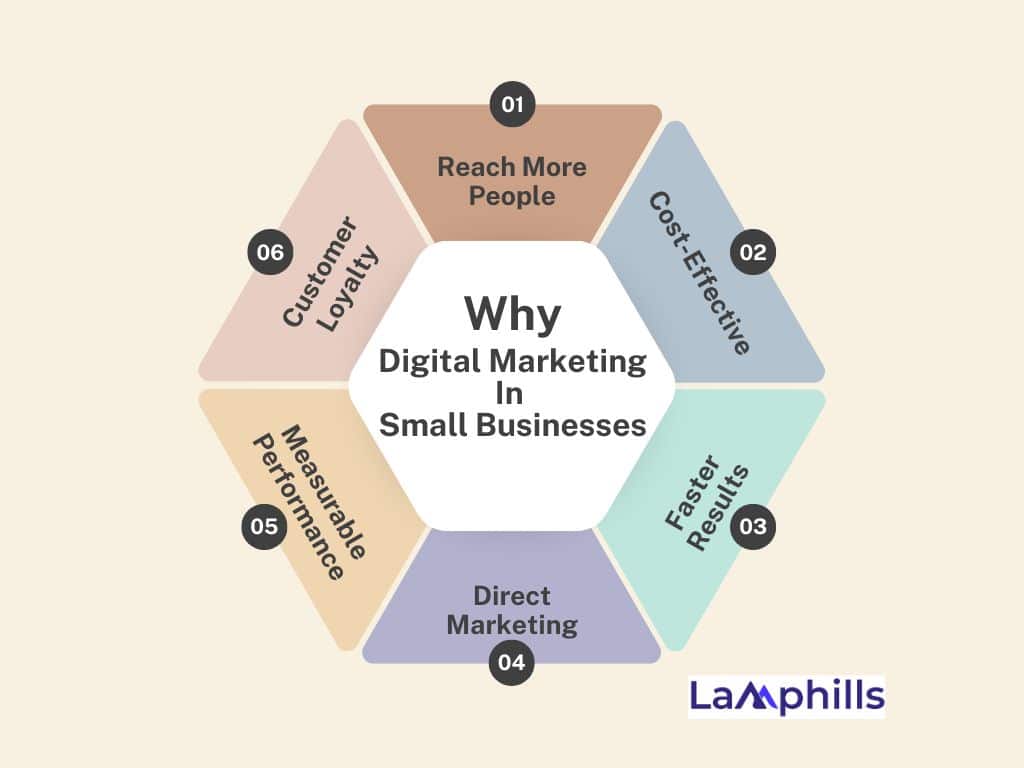
Additionally, digital marketing helps small businesses connect with their customers more personally and meaningfully, strengthening relationships and increasing loyalty. Here are reasons why digital marketing is important to small businesses:
1. Reach More People: Digital marketing helps small businesses connect with more potential customers online.
2. Cost-Effective: It is cheaper than traditional marketing methods, saving money.
3. Faster Results: Businesses can see results quickly, helping them grow faster.
4. Direct Marketing: Digital marketing allows businesses to focus on specific groups of people who are more likely to be interested in their products or services.
5. Measurable Performance: It provides clear data on how well marketing efforts work, making it easy to track success and improve.
6. Personal Connection: Businesses can engage with customers more personally, building stronger relationships.
7. Customer Loyalty: By connecting more personally, businesses can increase customer loyalty and repeat business.
Finally, digital marketing gives small businesses a cheap and effective way to reach more customers quickly and make smart decisions using clear data. By focusing on the right people and building personal connections, small businesses can strengthen customer relationships and increase loyalty, leading to long-term growth and success.
Read Also: Understanding The Benefit of Digital Marketing Strategies
Having known what digital marketing is, and why it is necessary for your small business, let’s proceed to why you are reading this article- “How I Do Digital Marketing for Small Businesses in 2024.” To answer this, I will be sharing my practical measures to achieve this.
Keep reading to learn more.
How I Do Digital Marketing for Small Businesses in 2024
Digital marketing for small businesses in 2024 is all about using online tools and strategies to reach and engage customers. In this article, I have taken the time to outline the strategies I use for small businesses, these measures are effective and have proven to be successful over time.
My approach to digital marketing for small businesses is in a few key steps:
#1. Understanding the Business and Its Audience
Before starting any digital marketing work, it’s important to understand the business and its customers. For example, when I helped Angel Beauty Salon, I first learned about their services, the salon’s atmosphere, and what made them special. I also talked to the owner to understand who their current customers were and who they wanted to attract.
By knowing these details, I could create a marketing plan that matched their style and appealed to the right people. For instance, I found out that most of their clients were young professionals who enjoyed the cozy and friendly vibe of the salon. With this information, I could tailor the salon’s online presence to attract more people like their current customers, making the marketing efforts more effective.
#2. Competitor Analysis: Learning from the Best
When I work on digital marketing for small businesses, one important step I use is called “Competitor Analysis.” This means looking at other businesses that are similar to see what they are doing well and what we can learn from them.
For example, when I helped Angel Beauty Salon, I first looked at other popular beauty salons in the area. I checked their websites, social media pages, and customer reviews to see what they were doing that made them successful.
I noticed that one competitor had a very active Instagram page with lots of high-quality photos and videos of their services. They also posted customer testimonials and offered special deals regularly. Seeing this, I realized that Angel Beauty Salon could benefit from doing something similar.
I suggested to my friend, the owner, that we start posting more photos and videos of their work, share customer reviews, and create some special promotions to attract more customers. By learning from the best practices of the competitors, we were able to improve Angel Beauty Salon’s digital marketing and attract more customers.
#3. Crafting a Social Media Strategy
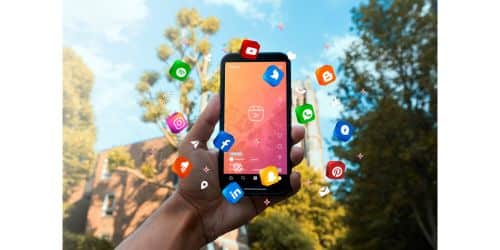
Creating a social media plan means figuring out how to use social media to get more customers. Here’s how I did it for Angel Beauty Salon:
First, we set clear goals. For the salon, the goal was to get more weekend appointments. Next, we identified their customers. Most of them were women aged 20-40 who love beauty and self-care.
Then, we chose the best social media platforms for their audience. Instagram and Facebook were perfect because their customers spent a lot of time there. We decided what kind of content to post, like photos of happy customers, before-and-after shots of hairstyles, and special promotions.
We made sure to respond to comments and messages quickly, building good relationships with customers. Finally, we regularly checked which posts got the most likes and comments and adjusted our plan based on what worked best.
With these, the Salon saw more weekend appointments and more engagement on their social media pages. This shows how a good social media plan can help small businesses grow.
#4. Using Paid Ads
Using paid ads is a key step in digital marketing for small businesses in 2024. Paid ads are advertisements that businesses pay for to appear on platforms like Google, Facebook, or Instagram. These ads help reach a larger audience quickly and effectively.
When I helped Angel Beauty Salon, one of the first things we did was set up paid ads on Facebook and Instagram. We started by identifying the target audience, which included local women and men aged 18-45 who were interested in beauty and self-care. Next, we created attractive ads that showcased the salon’s cozy atmosphere and high-quality services, using pictures of satisfied customers to draw attention.
We then set a daily budget for the ads to control spending and chose Facebook and Instagram as our platforms because they are popular among our target audience. Once the ads were running, we closely monitored their performance. If an ad wasn’t doing well, we tweaked the images or text to make it more appealing.
As a result, the salon saw an increase in new customers within a few weeks. Using paid ads effectively helped us reach more people and boost the salon’s business.
#5. Optimizing the Website
Optimizing the website means making sure the business’s website is easy to find, fast, and user-friendly. For example, when I worked with Angel Beauty Salon, I noticed their website was slow and hard to navigate. First, I improved the loading speed by compressing images and removing unnecessary plugins.
Then, I made the layout simpler so customers could easily find information about services, prices, and how to book an appointment. I also added keywords related to beauty services in the content to help the website appear higher in search engine results. These changes made the website more attractive to visitors and easier for them to use, which helped Angel Beauty Salon attract more customers online.
#6. Email Marketing: Building a Loyal Customer Base

Image by rawpixel.com on Freepik
Email marketing is a key part of building a loyal customer base. This involves sending regular emails to your customers to keep them informed, engaged, and connected with your business. For example, when I worked with Angel Beauty Salon, I helped them start an email marketing campaign. We collected email addresses from customers who visited the salon and from those who showed interest in their services online.
Every week, we send out emails featuring beauty tips, special offers, and updates about new services. We also included personal messages from the owner to make the emails more engaging. This regular communication helped the salon stay on customers’ minds and encouraged them to visit more often. Over time, these emails helped build a stronger relationship with the customers, turning them into loyal, repeat clients. This experience showed me how effective email marketing can be in maintaining customer loyalty and growing a small business.
#7. Analyzing Results and Adapting Strategies
Analyzing results and adapting strategies is an important step in my digital marketing process for small businesses in 2024. It means looking at what is working and what is not, and then making changes to improve.
For example, when I helped Angel Beauty Salon with its digital marketing, we started by running ads on social media and posting regularly. After a few weeks, I looked at the results to see how many people saw the ads, clicked on them, and booked appointments. I noticed that while many people liked the posts, not many were booking appointments through the ads.
Also, I realized we needed to change our approach. I talked to the salon owner and we decided to offer a special discount for first-time customers who booked online. We also started posting more before-and-after photos of hair and nail transformations to show the quality of the salon’s work.
After making these changes, we saw an increase in bookings and more engagement on the posts. By continuously analyzing the results and adapting our strategies, we were able to attract more customers to Angel Beauty Salon. This experience taught me the importance of being flexible and always looking for ways to improve the marketing efforts.
By following these steps, I help small businesses grow their online presence and reach more customers. You can also grow your small business using these same strategies.
Here’s a checklist to help you with effective digital marketing strategies for your small businesses.
What are the Challenges that Small Businesses face using Digital Marketing?
Digital marketing can be a powerful tool for small businesses to reach new customers and grow. However, it comes with its own set of challenges. Here are three major challenges small businesses might face when using digital marketing and how to overcome them.
#1. Limited Budget: Small businesses often have limited money to spend on digital marketing. This can make it hard to compete with bigger companies. To overcome this, focus on cost-effective strategies like social media marketing and email marketing, which are cheaper but still effective. Also, use free tools and resources available online to maximize your efforts without spending much.
#2. Lack of Time: Running a small business takes a lot of time, leaving little room for digital marketing efforts. To manage this, create a content calendar to plan your posts and marketing activities. Use scheduling tools to automate your social media posts and emails, so you don’t have to do everything manually every day.
#3. Understanding Technology: Many small business owners are not familiar with the latest digital marketing tools and trends. This can make it difficult to run successful campaigns. To tackle this, invest time in learning the basics of digital marketing through online courses, webinars, and tutorials. You can also consider hiring a digital marketing consultant or agency to help you get started.
Despite these challenges, small businesses can still succeed in digital marketing by being resourceful and strategic.
At the beginning of this article, I promised to give examples of small brands that used digital marketing to boost their sales and grow their business, to help inspire you.
Examples of Small Brands To Inspire You.
Digital marketing can help small businesses grow and connect with their customers. Here are five examples of small businesses that used digital marketing successfully and saw great results.
#1. Glossier: A beauty brand, that used Instagram to build a strong community. They encouraged customers to share their photos using Glossier products and featured these photos on their Instagram page. This made customers feel valued and created a lot of positive word-of-mouth marketing.
#2. Dollar Shave Club: Dollar Shave Club started with a funny and engaging YouTube video that quickly went viral. The video explained their service in a simple, humorous way, attracting millions of views and helping the brand grow rapidly.
#3. Warby Parker: This is an eyewear company, that used social media to offer a free home try-on program. Customers could order five pairs of glasses to try at home for free and share their experiences on social media. This helped the brand get a lot of attention and built trust with potential customers.
#4. Frank Body: This is a skincare brand, that uses Instagram to connect with its audience. They posted user-generated content, such as photos of customers using their coffee scrubs, and ran creative, themed campaigns. This helped them build a loyal and engaged following.
#5. Beardbrand: A grooming company for men, used YouTube to share educational content about beard care and styling. Their informative and entertaining videos attracted a large audience, establishing them as experts in their field and driving sales through their online store.
These examples show how small brands can use digital marketing creatively to grow their businesses and connect with their audiences.
Final Thoughts
My journey into digital marketing for small businesses has been very rewarding. Each business is unique, and creating custom strategies that highlight their strengths and connect with their audience is a fun challenge I enjoy.
In 2024, the online space keeps changing, and staying ahead of trends is essential. Whether it’s using new social media platforms, trying AI-driven marketing tools, or deepening community engagement, the key is to stay adaptable and focused on customers.
Helping small businesses succeed in the digital age isn’t just a job for me; it’s a passion. Seeing the café thrive and knowing I helped is a great feeling. Here’s to many more stories of small business success in the digital world!
Answers to FAQs
Does digital marketing work for small businesses?
Digital marketing offers significant opportunities for small businesses. Instead of limiting your sales to local contacts, you can now reach people across the country or even globally. This can be done cost-effectively and with measurable results.
How do I start digital marketing from scratch?
Here are some steps to begin your career in digital marketing:
1. Start a digital marketing course.
2. Pick your specialty.
3. Gain practical experience.
4. Establish yourself online.
5. Work in a job or freelance.
6. Craft a strong resume and cover letter.
7. Apply for jobs and get ready for interviews.
8. Build connections and freelance opportunities.
Does Digital Marketing Work for All Businesses?
Yes, digital marketing offers solutions for all kinds of businesses, whether they’re large or small. Even small businesses with limited budgets can benefit from tools like social media and email marketing without spending too much.”
Which business needs digital marketing most?
Hotels and hospitality businesses
Law firms
Medical and healthcare providers
Contractors and construction companies
Moving companies
Online service providers
Retailers
Local businesses
Which platform is best for digital marketing?
Businesses use several key online marketing platforms to advertise their products or services effectively. These include Google Ads, LinkedIn Ads, Facebook Ads, YouTube, and Amazon. Each platform has its strengths, audience, ways to reach specific groups, features, and limitations. So, it’s important to select the platform that best fits your needs and objectives.
Similar Articles
2024 Digital Marketing Trends: What You Need to Know
Understanding The Benefit of Digital Marketing Strategies
The Top 10 Digital Marketing Agencies In Nigeria You Need to Know
